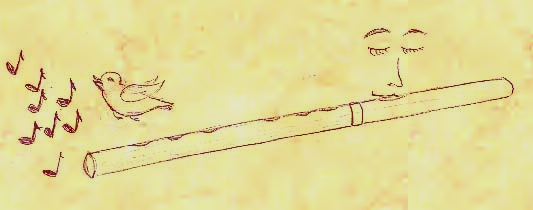

 Home
Home

Traditional flutes of today Beauty of wood
Products
Transverse flutes Renaissance Rafi
Among these instruments celebrated by Clément Marot, it remains some ones in european museum in Belgium and Italy, and curiously not in Lyon, city of Rafi. The technical drawing of the Renaissance flute of Bruxelles serves of model for the consort which is composed of four elements :
|
Primalda : Piccolo in d Alta : Alto in g Trea : Tenor in d Alba : Bass in g |
 |
The bore, rigorously cylindric gives to the Renaissance flute a strong but soft sound.Due to its size, Bass is made of two parts, the small Piccolo is made of one part, Alto and Tenor can be made of one or two parts, as wanted. Historically, there is only one tenor in two parts. Holes are designed with ergonomics ; it is not useful to have hands of strangler ; music softens customs. Pitch of Renaissance was not fixed. Frequence measurements did not exist ! Apparently, actual musicians do not discuss about this question and accept well the standard of 440.
Renaissance flute is rather mesotonic by nature and its chart of fingering can also conducts to debate. On the other hand, ears and fingers of 21th century have their habits. So two possibilities are proposed :
Classic mesotonic temperament with « historic » fingering :
| Piccolo in d | Alto in g | Tenor in d | Bass in g |
Equal temperament with « conventional » fingering :
| Piccolo in d | Alto in g | Tenor in d | Bass in g |
Musical example for a Rafi mesotonic tenor flute : "Une jeune fillette"
_______________________________________________________________
Home Presentation Manufacture Articles in wood Prices Contact
17 December 2020